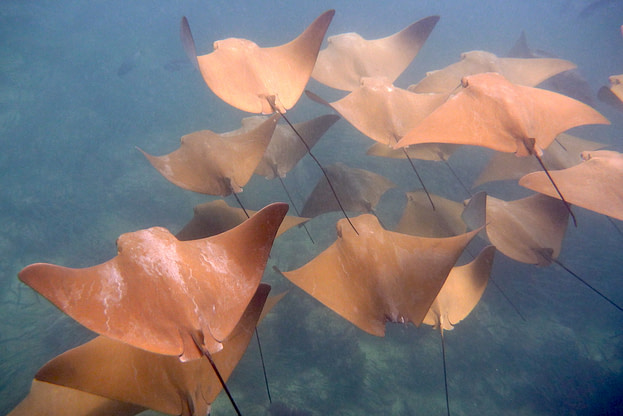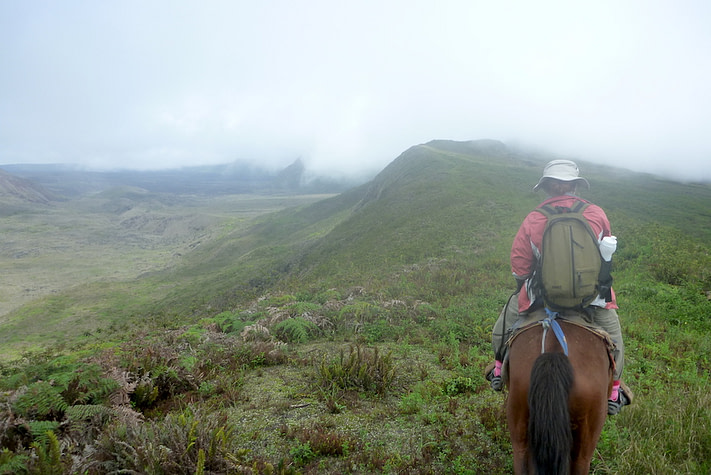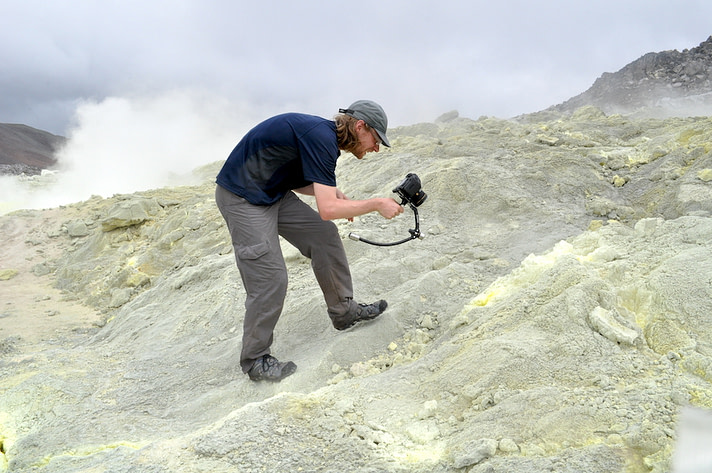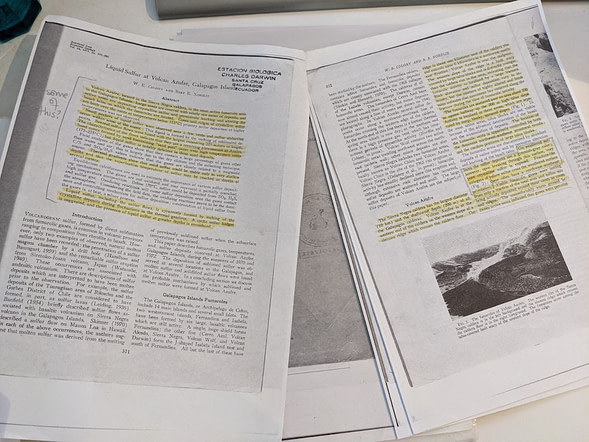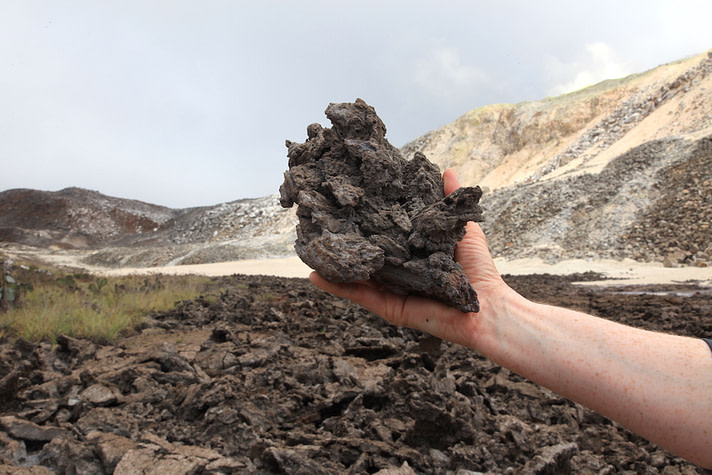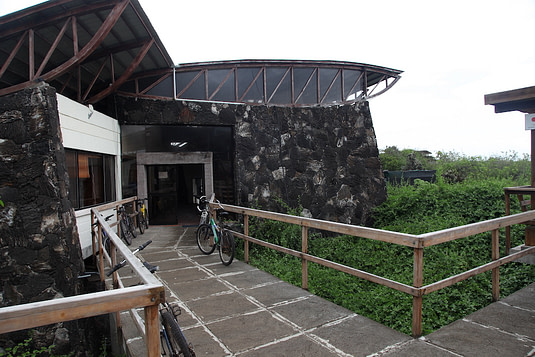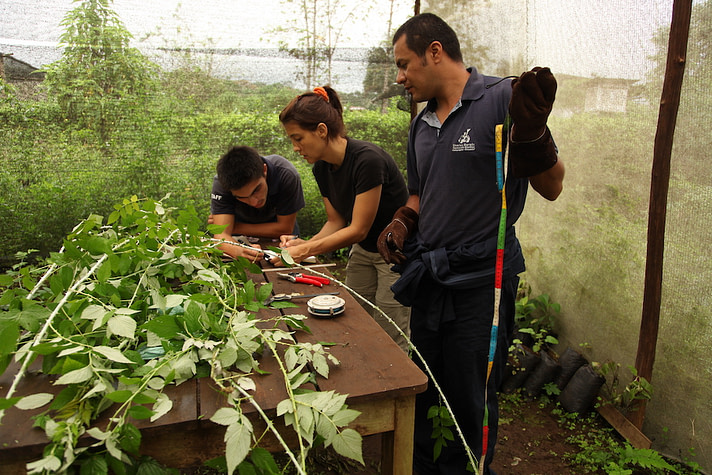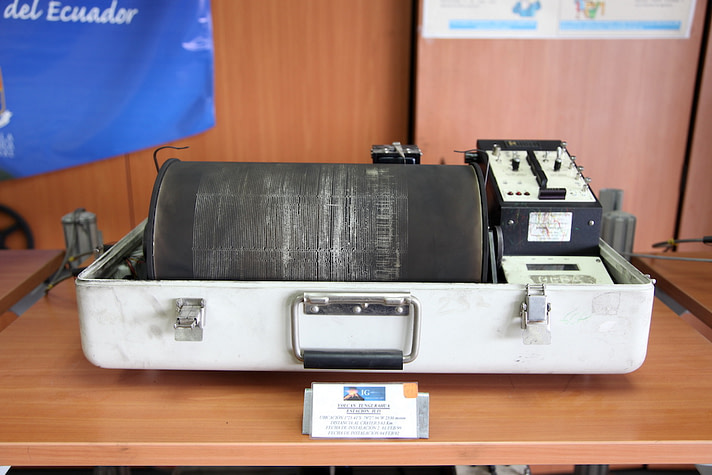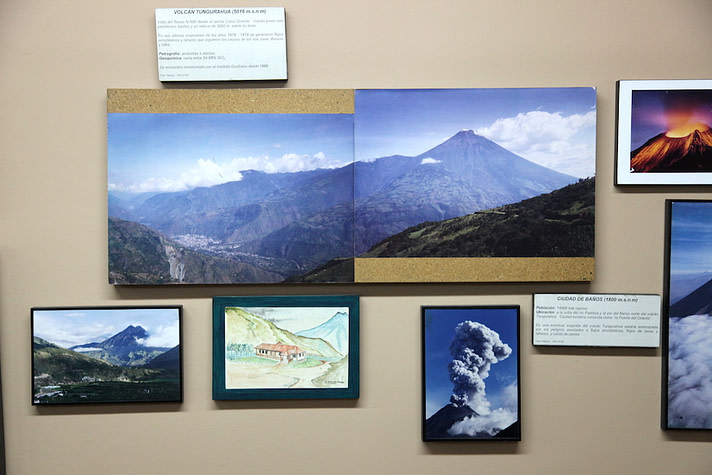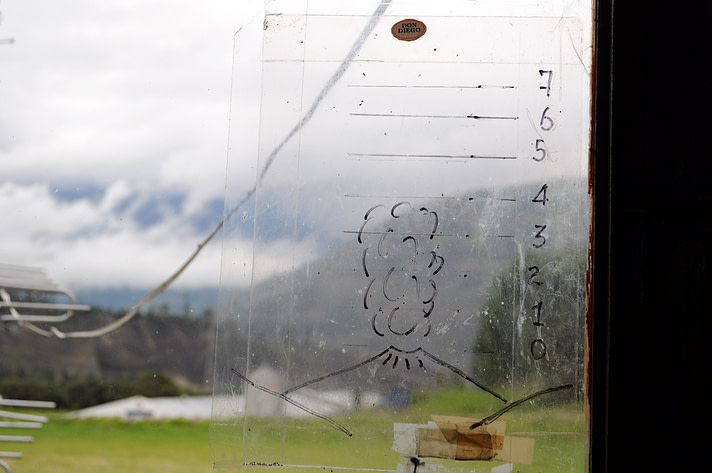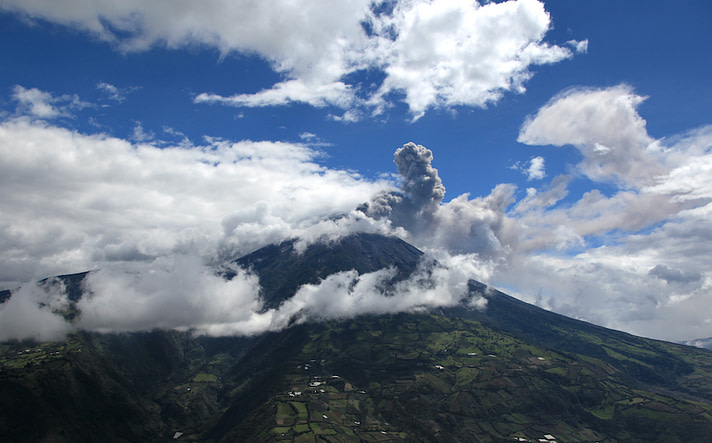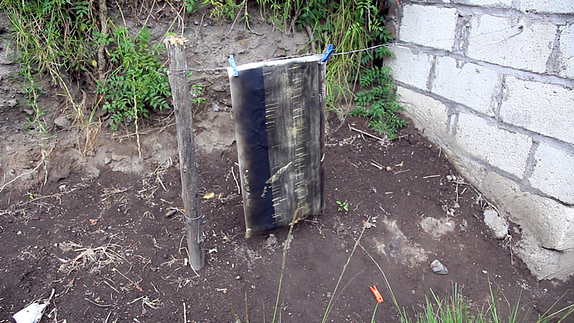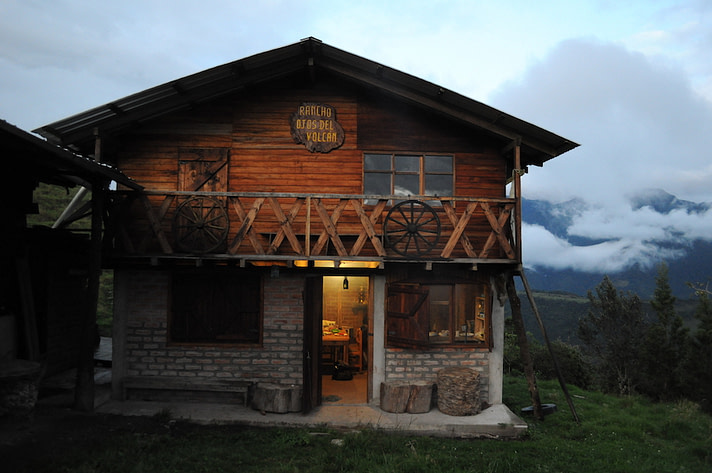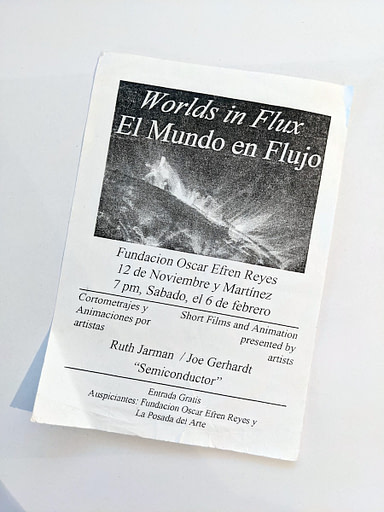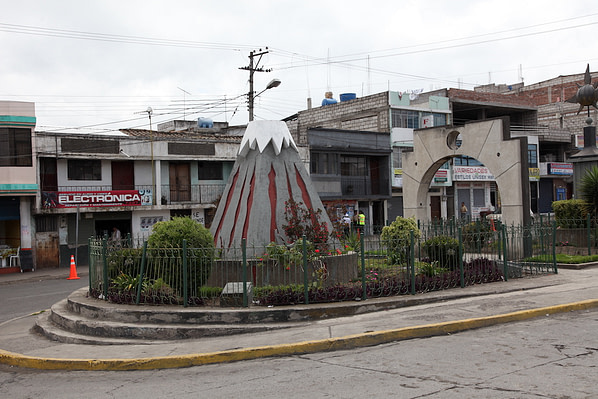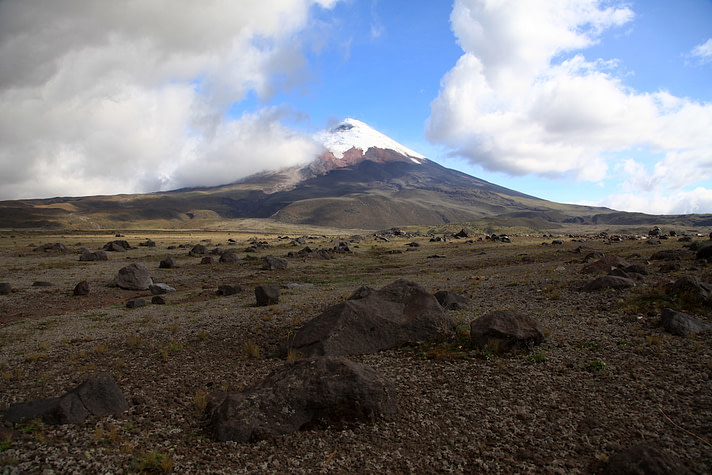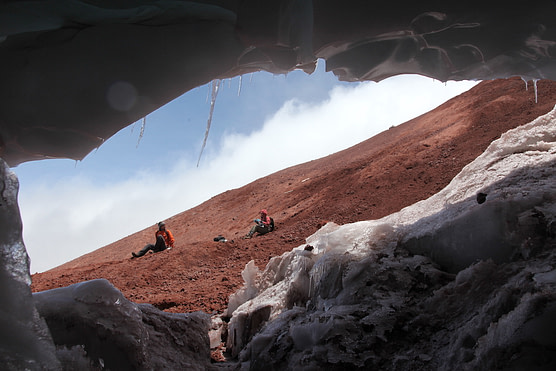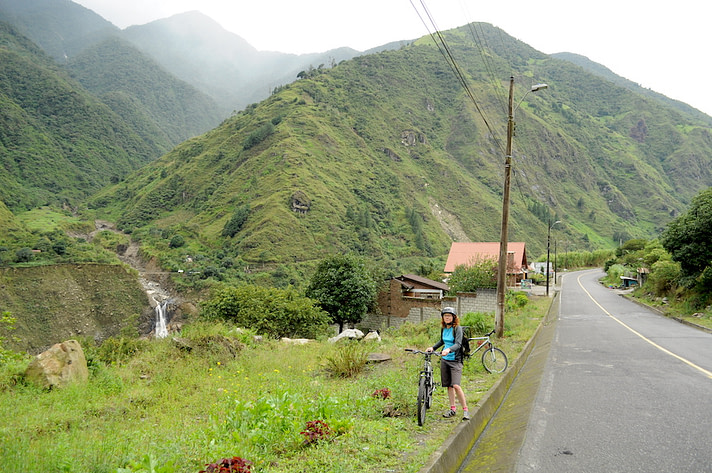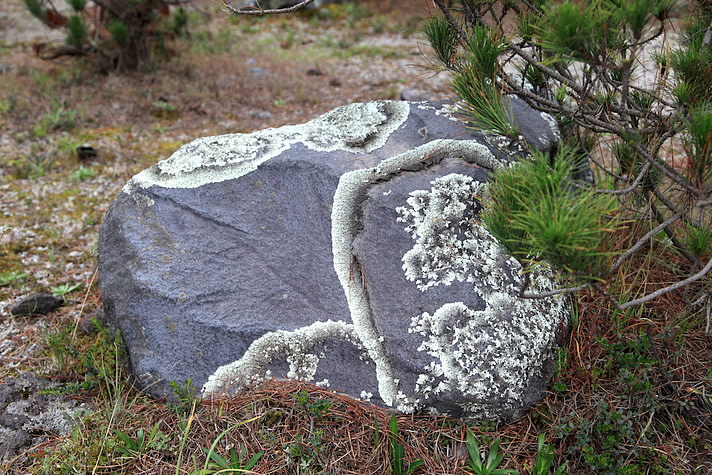In 2010 we went to the Galapagos Islands and mainland Ecuador as part of the Gulbenkian Galapagos Artist residency. We were developing an artwork which explores how humans observe, document and create an understanding of the origins of the physical world around us and we had been looking for an opportunity to visit volcanic landscapes and observe volcanologists, we were lucky to be offered this residency along with a Smithsonian Artist Research Fellowship at the Mineral Sciences Laboratory in the Smithsonian National Museum of Natural History later the same year. This research, explorations and filming became our artwork Worlds in the Making.
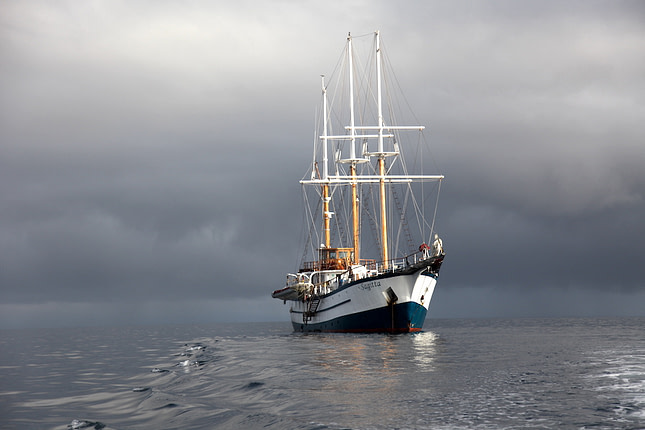
The residency involved spending 7 days on a boat with a Galapagos natural history guide, who took us to many of the Galapagos Islands to learn about the landscapes, animals, history of and environmental approach to the Galapagos Archipelago.
![]()
We stayed in Isla Isabela for a week and trekked up to volcanic landscapes at Volcan Chico and to the old Sulphur Mines, to film them.
Filming at the old sulphur mines on Volcan Azufre, which appears in our work Worlds in the Making. Volcanologist Dick Fiske from the Mineral Sciences Lab can also be heard reading a description of a scientists exploration to, and study of, the sulphur mines at Volcan Azufre, which we found in the Charles Darwin Research Station Library (see below).
The library was a fascinating resource, every scientist who came to study on the Galapagos Islands were obliged to donate the scientific papers from their research conducted there.
We spent a week at the Charles Darwin Research station on the Island of Santa Cruz. Visiting scientists stay here to carry out studies into wide ranging subjects from invasive marine species to the restoration of ecosystems.
We spent a day with Jorge and his team, filming his processes of collecting data on the invasive blackberry. This became our work Indefatigable.
Back on mainland Ecuador we had arranged to meet volcanologists at the University of Quito.
At the University of Quito we learned about one of the sites we would visit, the Volcano Observatory in Banos where they observe the active Volcano Tungurahua, you can see a drawing of it in this image.
They use a mix of digital and analogue methods to study Tungurahua including this make shift technique for estimating the height of the volcanic plume in kilometres.
The scientist’s hand-make carbon paper for their seismographs, they taught us how to do it. They like using paper seismographs as they can hear when the needle frantically scratches the paper alerting them to an eruption.
During our time in Banos we spent a few nights in this hut, opposite the volcano, the clouds rarely cleared for any decent filming but the whole building would shake with the boom of eruptions.
During our couple of weeks in Banos, the host where we were staying decided to organise a screening of our artworks at the only place in town which owned a projector. It was an incredible experience, a mixture of locals of all ages and tourists including some teenagers from a local village who would attend a computer club on a Saturday morning to access digital tools for making work. We talked about the works in English, someone would translate into Spanish and there would be all sorts of questions flying around, we remember it as a highly charged excitable affair, we hope we inspired.
The University of Quito also sent us on trip with their engineers for a few days, who were mending one of the seismic stations. We were under falling ash and the camera lens became crunchy.
We visited Cotopaxi, the world’s highest active volcano. You must climatise to the height before attempting to climb it. We made it to the snow line. Others we were staying with made an overnight trek to the top which sounded pretty harrowing, it was incredibly windy.
Galapagos Residency Publication: https://gulbenkian.pt/uk-branch/publication/galapagos/
Calouste Gulbenkian Foundation: https://gulbenkian.pt/uk-branch/
Article on Semiconductor’s Galapagos residency: https://gulbenkian.pt/uk-branch/gulbenkian-galapagos-artists-residency/
Galapagos Conservation Trust: https://galapagosconservation.org.uk
